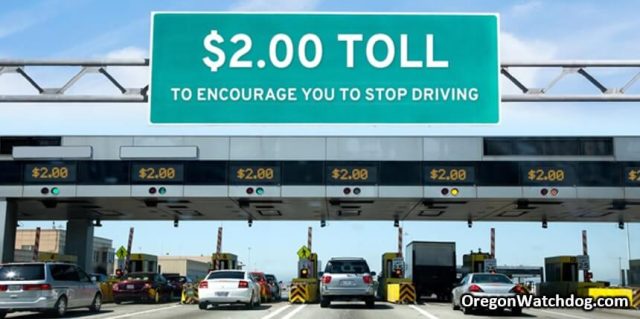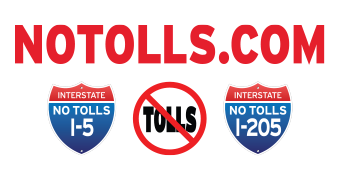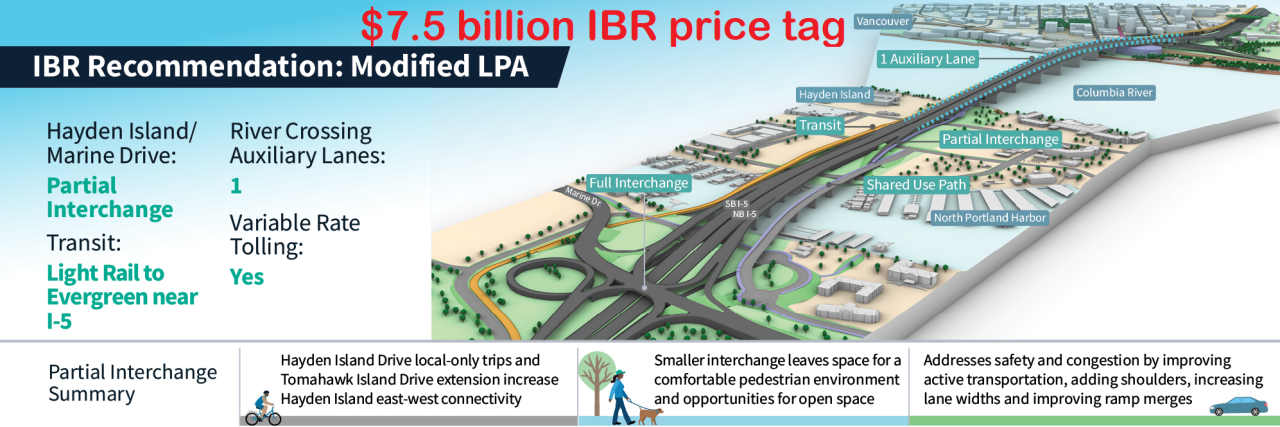“The most fiscally irresponsible legislation I have seen before an Oregon legislative committee.”
No Tolls staff
The Oregon legislature’s Joint Committee on Transportation held its first public hearing of the 2023 legislative session on Thursday evening, April 27th. The 12 member committee said the purpose of the hearing was to listen regarding the various proposals for Oregon to fund the Interstate Bridge Replacement (IBR). Those members include Lew Frederick, Susan McLain, Brian Boquist and Shelly Boshart Davis who represent Oregon on the IBR program’s 16-member oversight committee with 8 Washington legislators.
The meeting began with a series of politically connected speakers all in favor of funding the $7.5 billion IBR project. These included representatives from the city of Portland, TriMet, business and organized labor.
Overall, the moderator indicated there were 61 people online wanting to offer public testimony, in addition to individuals in the capitol meeting room. Over half the list of citizens were speaking against the IBR’s Locally Preferred Alternative (LPA). Notable was Martin Slapikas on behalf of Hayden Island residents who oppose the project. They want a 3rd bridge built first before anything is done with the Interstate Bridge.
Joe Cortright is a Portland economist and former legislative staffer who has been critical of the project. He said its scope should be narrowed to replacement of the bridge itself without new capacity. He noted the IBR’s own cost estimate of just $500 million for the bridge portion of the project.
He described the main proposal as “the most fiscally irresponsible legislation I have seen before an Oregon legislative committee.”
Unlike the 2013 legislation for the Columbia River Crossing (CRC) proposal, “You have no guarantee of what the ultimate cost of the project is,” Cortright told the committee. “The amendments are a blank check to ODOT that it will inevitably cash in to your disadvantage.”
Clark County resident John Ley reminded the legislators that Oregon and Washington are currently building another bridge over the Columbia River for just $500 million. The Hood River replacement bridge serves as a more reasonably priced reminder of the bloat in the IBR.
A key component for funding the IBR project and for a multitude of other Portland area projects is tolling. It was originally conceived as a revenue source in HB 2017, enacted six years ago. But there is considerable community pushback on the tolls.
On the eve of the much-anticipated public hearing, three Clackamas County lawmakers introduced a bill that would place a two-year pause on the Oregon Department of Transportation’s plans to toll drivers who use Interstate 205.
“For the five years I served as a city councilor, mayor, and now state representative, I’ve attempted to work with ODOT and provide feedback about how this plan will negatively impact my district,” one of the chief sponsors, Rep. Jules Walters told a local news organization.
“My constituents are already feeling the dangerous effects of traffic coming off of both I-5 and I-205 and overburdening our neighborhood streets,” Walters continued. “ODOT has not demonstrated how they plan to mitigate the costs to cities, local businesses and residents associated with that diversion.”
Legislators were asked why ODOT won’t tell them and the public how much of the projected 12 hour reduction in I-205 traffic congestion will be due to the addition of new lanes. The project will add a new lane in each direction for 7 miles. ODOT staff have only shared that tolling and the new lanes will reduce congestion from 14 hours (2045) to just 2 hours. They refuse to say how much of that reduction is due to the 50 percent increase in vehicle capacity.
Clackamas County residents have been told by ODOT that the I-205 project will cause significant traffic diversion. Several citizens expressed frustration with ODOT’s failure to listen to their concerns regarding already congested roads becoming even more congested due to tolling. In some cases traffic will more than double.
“After spending $9 billion, $7.5 billion for the IBR and $1.5 billion for the Rose Quarter, the IBR tells us that half of rush hour traffic will be stuck going zero to 20 miles per hour,” Ley said. “What a waste. The people want to reduce traffic congestion and this doesn’t do that”.

Citizen Dean Suhr told legislators that local citizens are rallying around IP-4. The initiative petition is currently collecting signatures for a November 2024 statewide ballot measure. If enacted, it would require a vote before tolls could be placed on any Oregon highway. According to Suhr, it is retroactive and includes the IBR, unlike the Walters proposal which allows tolling on the Interstate Bridge.
One member of both the Joint Transportation Committee and the IBR’s Executive Steering Group is Rep. Khanh Pham. While supporting the need to replace the Interstate Bridge, she has questioned the value as the IBR’s price has grown significantly. Now she’s thrown down a marker on tolling.
She joined Walters and Representatives Courtney Neron, Annessa Hartman and Senators Mark Meek and Aaron Woods as chief sponsors of the new legislation to delay tolling, House Bill 3614. They also have 21 co-sponsors, many of them Republicans.
The bill illustrates a growing, bipartisan tide of resistance to charging motorists for the use of I-5 and I-205. In 2017 the Legislature passed a $5 billion transportation package that included money for improvements on I-205 and I-5 at the Rose Quarter. The lawmakers acknowledged that ODOT’s primary source of revenue, the gas tax, was losing ground to fuel efficiency, electrification of vehicles, and inflation. They directed ODOT to include tolling as a tool. Since then, the agency has studied both congestion pricing—variable rate tolling to encourage drivers to use roads less at peak hours—and tolling aimed at generating revenue to pay for highway projects.
ODOT is currently studying two concepts: the Regional Mobility Project and the I-205 Toll Project. The agency has been sharing information and gathering public comment on both.
What’s clear from lawmakers is that fears of the cost of tolls and, particularly along I-205, diversion of traffic to local streets are generating widespread concern.
Lawmakers in last night’s hearing were reminded of Washington state’s experience, where the legislature had to bail out the entire tolling system with general fund revenues for the past three years. Pandemic lockdowns significantly reduced toll revenues to the point they failed to cover the cost of collection.
On Seattle’s I-405/SR-167 tolling system, the cost of collection was 68 percent of tolls collected in 2021. The gas tax has just under a one percent cost of collection.
There were so many citizens offering comment, the committee of legislators will hold a second public hearing on Thursday, May 4th.



3 comments
Greg Milholland
April 28, 2023 at 11:29 pm
I believe that they need to seriously consider replacing the I5 bridge with a tunnel. No issues with the FAA or the coast guard regarding height issues. I believe that a tunnel is safer with regards to earthquakes. There would also be much less environmental impact.
John Ley
April 30, 2023 at 3:37 am
Greg –
A month ago, Vancouver city Councilman Ty Stober said he wanted the IBR to take another look at a tunnel. This was after the Coast Guard doubled down on their demands for a crossing that offered at least 178 feet.
Separately, Seattle’s Bob Ortblad continues to push for an Immersed Tube Tunnel.
The current LPA does not solve traffic congestion problems. It is a huge waste of taxpayer money, all in the name of extending MAX light rail to Vancouver.
Sam Churchill
April 30, 2023 at 7:16 am
Thank you for your compelling arguments against building such a bloated transportation project and tolling. And thank your very informative news coverage.
I live on Hayden Island and realize that tolls will have a huge impact on our island’s economy. Bridge funding has to come from somewhere. I think everyone would be better off with a cheaper bridge rather than a multi-billion freeway expansion project.
Could autonomous EVs save time and money over trains? We’ll never know. We can’t even see a realistic 3D rendering of what they DO envision. Thank you again for providing a forum for everyone.